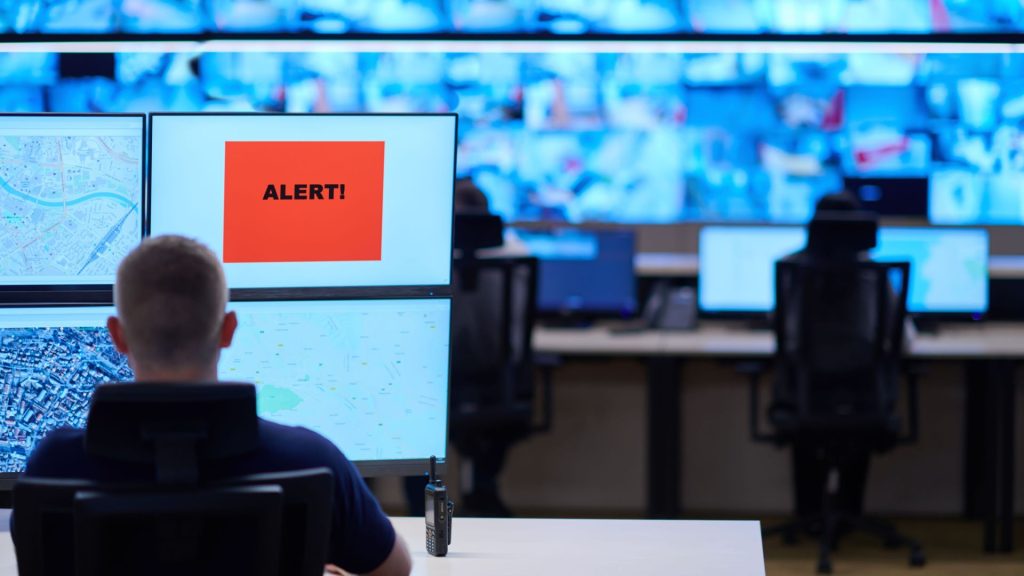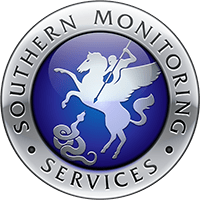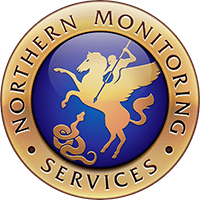Alarm handling is one of the most basic and fundamental parts of professional monitoring services, both Alarm Monitoring and CCTV Monitoring account for a large proportion of what we do here at Southern & Northern Monitoring.
In this article, we’ll explain the most important facts around alarm handling and how it works. This will include what happens when a monitored alarm system is triggered and how the process flow works of us dealing with alarms. Perhaps most importantly, we’ll explain what it means to security customers, covering the key benefits of more flexible and more resilient protection.

What is Alarm Handling?
The main thing security alarm monitoring service providers do is provide availability for remote alarms to go into their Alarm Response Centres (ARCs), and for those alarms to be triaged properly so they get the right level of attention.
That can cover a whole range of alarms, depending on the services included with your provider. This may include anything relatively minor like a low battery alarm, all the way through to kidnapping helplines, or panic alarms and fire alarms.
In that respect, it is vital to have the right planning, infrastructure and technology, and highly-trained staff in place within the ARC – or in our case ARCs, as we operate two in the UK. These are all important to deal with those different levels of prioritisation and choose the appropriate response when an alert is raised.
Alarm handling does, of course, involve taking decisive action when required. This can include alerting keyholders or sending a direct signal to the police (depending on your service options) as quickly as possible. You’ll discover later on how speed can be one of the major benefits of professional alarm monitoring and handling.
When we talk about alarm handling, that can include an array of different alarm systems but we tend to talk the most about intruder alarm systems and CCTV & video surveillance systems. However, CCTV monitoring can be more complex and can open up many other opportunities for remote security services. Here’s a helpful video where we explain CCTV monitoring in more detail.

How does Alarm Handling Work?
The workflow for security alarm handling can vary between different alarm response centres and the service options you have in place.
At Southern & Northern Monitoring, we have two stages to prioritisation. The first stage of that is using our alarm handling software, which automatically colour codes and prioritises each alarm as it comes in. Security operators can visually see the ones at the top are the most important and the ones lower down are a lower priority.
The software does part of the work for us, but when it comes to presenting those alarms to operators and to help ensure they receive the most appropriate actions, we want to ensure that our operators are really focused on those high-priority ones because there could be a serious risk to life or property.
So, we’ve invested in what we call our electronic virtual operator to handle some of the lower-priority calls. This means there is quicker and more efficient service for them, and our team is then able to focus on the higher priorities that we’ve mentioned above.
It has taken quite a lot of time and significant investment in refining the process where the electronic virtual operator can help to filter through and handle some alarms. The result is that when somebody receives a call from our ARCs, they’re getting the essential information they need in a friendly and efficient way. Plus, there is always the option of talking to an operator if they need to.
After the alarm has been received and prioritised, the most appropriate course of action can be taken. This is dependent on a few key factors:
Is the alarm likely to be a confirmed risk or threat?
Many alarms that come through are false alarms triggered by a tree on a windy night, for example. We use advanced methods to help determine whether an alert is likely to have been triggered because of something like the example above, or whether it may actually be someone breaking into your home or commercial premises.
We essentially look for patterns that are familiar with the latter scenario, which included multiple detectors picking up movement in multiple areas. This is one area where connected CCTV can be so valuable in providing video footage to support visual verification.
What is happening and what is the risk level?
As we’ve explained above, we use advanced technology to help prioritise alarms, so our remote security operators are more available to focus on high-priority alarms (instances where there may be a serious risk to life or property). In the case of intruders, CCTV and video analytics can be extremely helpful in giving our operators even more information to assess.
What protocols have been set out in your services agreement?
When you partner with a professional security monitoring provider like us, you can set the protocol for what happens when an alarm is raised. This can include informing a keyholder or multiple keyholders and even going directly to the police.
These protocols really help when combined with our electronic handling system in two ways. Firstly, it means that if we can’t get hold of one keyholder, we can work our way down the list of other contacts provided – the system can do this quicker than somebody picking up the phone and dialing their way through a list.
Secondly, when a call is made to keyholding services, the virtual operator can get the message across on a direct line much quicker than an operator waiting to connect and then relaying the message for somebody to write down at the other end.
As we’ve mentioned above, speed and reliability really are the name of the game when it comes to high-integrity security alarm monitoring.

How does professional alarm handling help homeowners and businesses?
Some people, especially end-users, find it hard to fully understand what professional monitoring gives them, which is why security installers need to communicate the benefits to their customers.
People may ask, “Can I not just monitor the security myself?” But alarm handling is a prime example of advanced technology and highly trained qualified staff helping to provide the best possible protection. It is safer, quicker, and more reliable than homeowners or business site managers trying to do it themselves.
High-integrity monitoring centres that are NSI Gold Accredited (like ours) undergo rigorous external audits every year to ensure we are providing the required standards in our infrastructure and our operations. We are also connected to the Police’s own ECHO network, which can make escalation and response times to threats even faster.
If you’d like to learn more about our security solutions and monitoring services, visit https://www.smon.co.uk/services. We’re working with the leading manufacturers to provide security systems that enable installers to provide the best protection to their customers. Plus, they can benefit from one of the best-in-class monitoring services in the UK, from our two fully accredited ARCs.
To discuss the Southern and Northern Monitoring products and services you can provide to your clients, please complete the form below, give us a call at 0844 871 2223 or complete the form below.

